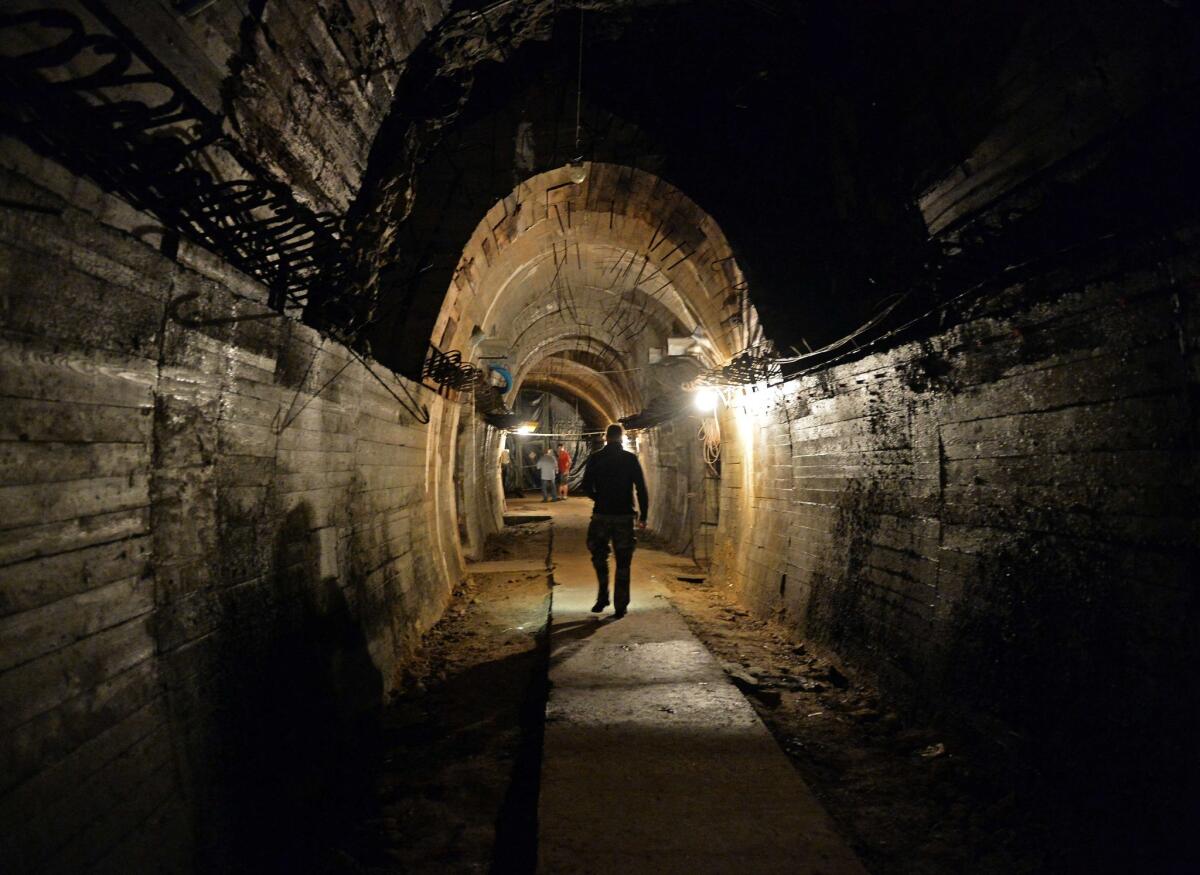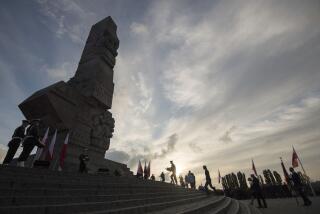Polish authorities seal off area believed to hide lost Nazi gold train

A tunnel beneath Ksiaz castle in Walbrzych, one of the underground passages built by the Nazis during World War II and where treasure hunters claim to have located a missing Third Reich train laden with gold and valuables.
Gold fever has descended on southwestern Poland since a top culture official gave credence to the claim of two treasure hunters to have located a legendary Nazi train loaded with valuables in an abandoned mountain railroad tunnel.
Locals and foreigners have arrived by the scores in recent days with metal detectors and set to combing the forested area of the Owl Mountains in Lower Silesia where authorities said last week they had been shown ground-penetrating radar images of an armored train hidden in a tunnel.
The mountainous area around the castle city of Walbrzych was honeycombed with underground rail passages and bunkers during World War II, when it was part of Germany and the Nazis created Project Riese, or Giant, for suspected weapons development and supply depots for the war effort.
Since Deputy Culture Minister Piotr Zuchowski said last week that he was “more than 99%” sure the treasure-laden transport exists and would soon be located, the freelance hunters have converged on the rail line from Wroclaw, creating what authorities say is a danger.
One treasure hunter attempting to take a selfie along the active rail line was almost hit by a train, police spokeswoman Magdalena Koroscik told the Associated Press.
“Half of Walbrzych’s residents and other people are going treasure hunting or just for walks to see the site. We are worried for their security,” Koroscik said.
On Monday, Lower Silesia Gov. Tomasz Smolarz announced in Wroclaw, the regional capital, that the area around the purported discovery was being sealed off by police. Army munitions experts were to be dispatched to secure the approach to the train’s suspected location, he said.
“First and foremost, we have to be sure of people’s safety,” Smolarz said, announcing the closure of a small wooded area along tracks leading from Wroclaw into the underground tunnel network. “Securing of the area will be continued by police, forest guards and railway security guards.”
He confirmed that the military experts were being brought in to examine the area for potential explosives hazards as the treasure hunters’ radar images show cannons mounted on the train. There are also widespread suspicions that the Nazis mined the tunnels before abandoning the region in the spring of 1945 as Soviet Red Army troops advanced on Germany’s retreating forces.
Lower Silesia was part of Germany before the Nazi defeat and Wroclaw was then known as Breslau. The area was ceded to Poland after the war.
Smolarz sought to cool the feverish expectations fanned by last week’s news. He said the evidence provided by the purported finders of the train was no more convincing than that put forward in previous claims over decades that all proved to be groundless.
Zuchowski warned last week of the danger to civilians and amateur spelunkers of entering the disused tunnels around Walbrzych in search of the treasure train. He said it would take weeks for the area to be secured and the suspected location explored.
Under Polish law, any wartime-era valuables recovered would belong to the state. Zuchowski said, however, that any artworks, jewelry or other valuables that could be traced to their original owners would be restored to them or their heirs.
Historians estimate that at least 80,000 Polish homes, mostly those of Jews who were sent to concentration camps, had been looted by the Nazis after their surprise Sept. 1, 1939, invasion.
The legend of the lost gold train holds that German authorities ordered the confiscated valuables loaded onto an armored train for transport westward as the Soviets were about to overrun Breslau and that the train was forced to hole up in one of the Riese tunnels before reaching better secured German territory.
Follow @cjwilliamslat for the latest international news 24/7.
ALSO:
India allows Jains to continue fasting until death
How badly was an ancient temple damaged by Islamic State?
Myanmar’s backsliding leads to doubt about U.S. diplomacy strategy
More to Read
Sign up for Essential California
The most important California stories and recommendations in your inbox every morning.
You may occasionally receive promotional content from the Los Angeles Times.











